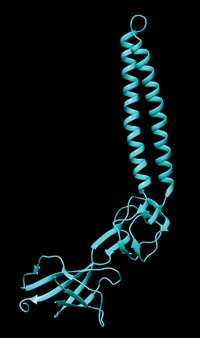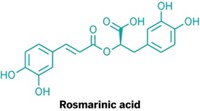Advertisement
Grab your lab coat. Let's get started
Welcome!
Welcome!
Create an account below to get 6 C&EN articles per month, receive newsletters and more - all free.
It seems this is your first time logging in online. Please enter the following information to continue.
As an ACS member you automatically get access to this site. All we need is few more details to create your reading experience.
Not you? Sign in with a different account.
Not you? Sign in with a different account.
ERROR 1
ERROR 1
ERROR 2
ERROR 2
ERROR 2
ERROR 2
ERROR 2
Password and Confirm password must match.
If you have an ACS member number, please enter it here so we can link this account to your membership. (optional)
ERROR 2
ACS values your privacy. By submitting your information, you are gaining access to C&EN and subscribing to our weekly newsletter. We use the information you provide to make your reading experience better, and we will never sell your data to third party members.
Biological Chemistry
Glucose Derivative Takes Down Termites
Gluconolactone increases termites' susceptibility to infection by a fungal pathogen, suggesting it could serve as a nontoxic pest control agent
by Celia Henry Arnaud
June 15, 2009
| A version of this story appeared in
Volume 87, Issue 24
Something as simple as a modified sugar could help knock out termites and lead to a general nontoxic form of pest control, according to a new report (Proc. Natl. Acad. Sci. USA, DOI: 10.1073/pnas.0904063106). Gram-negative bacteria binding proteins (GNBPs) are receptors in insect immune systems that alert the creatures to the presence of pathogens. Although GNBPs share features with bacterial β-glucanases, which are enzymes that digest glucans, biologists thought that the insect proteins had lost their enzymatic activity. Ram Sasisekharan of MIT, Rebeca B. Rosengaus of Northeastern University, and coworkers discovered that at least one GNBP in termites, GNBP-2, which they found in termite nest material, still has β(1,3)-glucanase activity. The researchers then looked for a small molecule that would block only the β-glucanase activity without hindering other functions. A glucose derivative, D-glucono-δ-lactone (GDL), does the trick. Treating termites with GDL increases the insects' susceptibility to infection by a fungal termite pathogen, leading the researchers to suggest that GDL could be incorporated in building materials as a pest control measure.






Join the conversation
Contact the reporter
Submit a Letter to the Editor for publication
Engage with us on Twitter